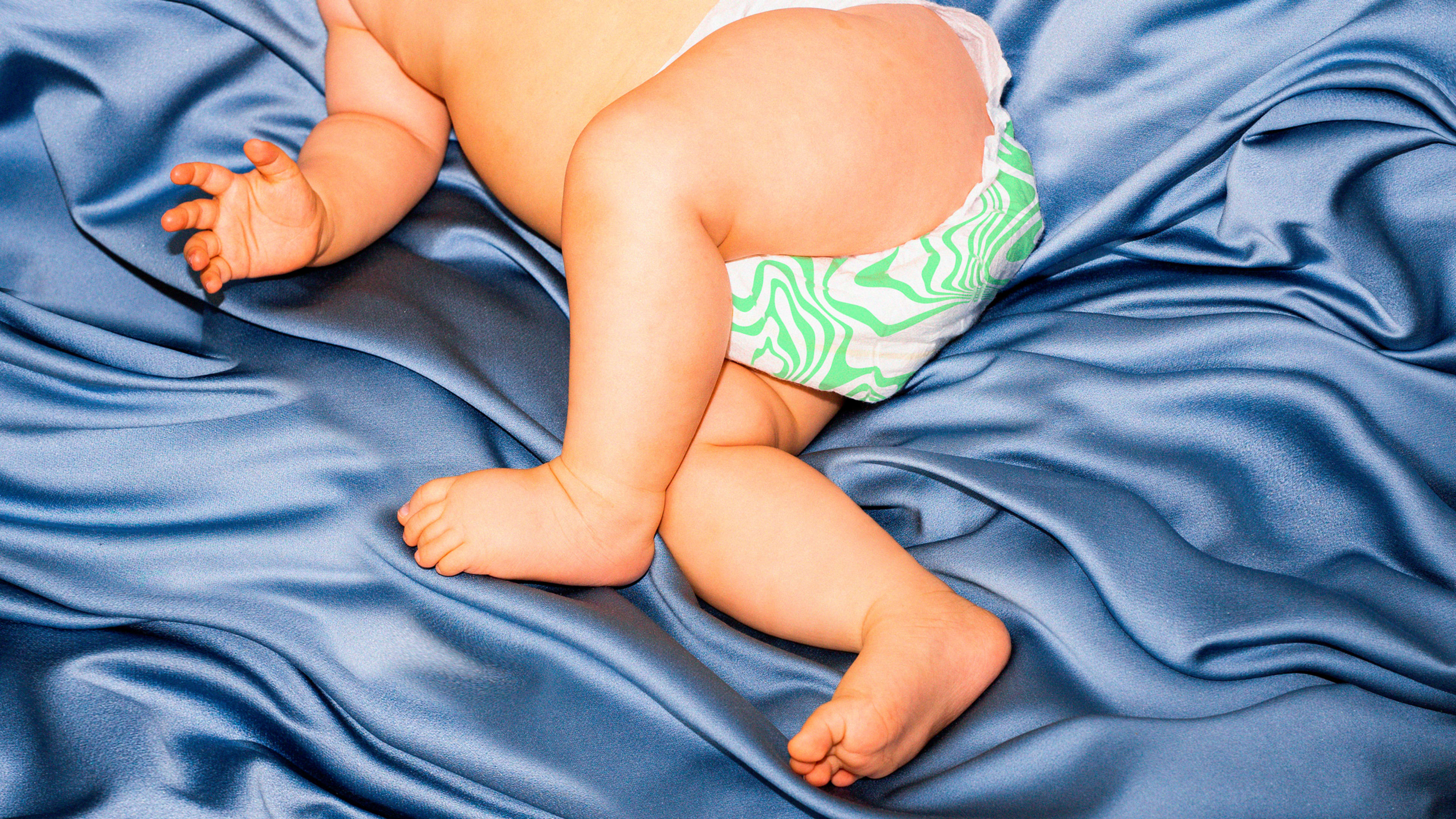When my baby was born, the nurses washed and swaddled her before putting her in a newborn Pampers diaper that looked soft and cottony against her tiny body. But in fact, there was very little cotton—or indeed, any organic materials—in it. The vast majority of the 20 billion diapers churned out in America each year are made of plastic.
For half a century, the $79 billion global diaper industry has been dominated by Huggies and Pampers, which continue to control around 80% of the market. These brands have designed effective diapers that cost around $0.37 a pop. The problem is that they’re made almost entirely of petroleum-derived plastic, from the polyester exterior to a core of hyper absorbent pellets. Since plastic doesn’t biodegrade, these diapers will take centuries to decompose, breaking into tiny particles called microplastics that are known to end up in the food chain, harming animals and humans. Today, diapers make up 4% of American landfills.
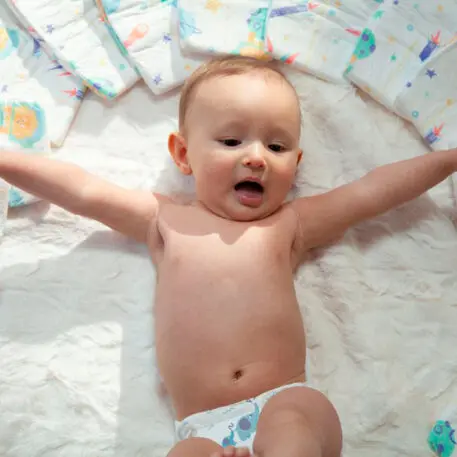
Convenience, But At A Cost
For most of human history, caring for infants was a very messy business. If babies wore them at all, diapers were made from cloth, which meant frequent leaks and hours of washing. Then, in the mid-1940s, a young American mom named Marion Donovan invented a baby “pant” that included a plastic layer, cutting up shower curtains and nylon parachute material for early prototypes. This eventually became the world’s first disposable diaper. In 1948, Johnson and Johnson developed the first mass-market version of this product. In 1961, Procter & Gamble launched Pampers; seven years later, Kimberly Clark launched Huggies.
Throughout the ’60s and ’70s, the two conglomerates continued to make improvements to the diaper, while heavily marketing the products to consumers. James Keighley saw this process firsthand. After studying engineering in college, he joined Procter & Gamble in 1977 to become a Pampers diaper engineer. Keighley says his team worked on creating better-fitting leg cuffs and developing machinery to crank out large numbers of diapers.
They hit a major breakthrough in 1980 when a super absorbent polymer material hit the market. “It was originally developed for agriculture, but it was a game changer when it came to diaper innovation,” Keighley says. “Suddenly, we could create a much more compact diaper that was even more absorbent.”
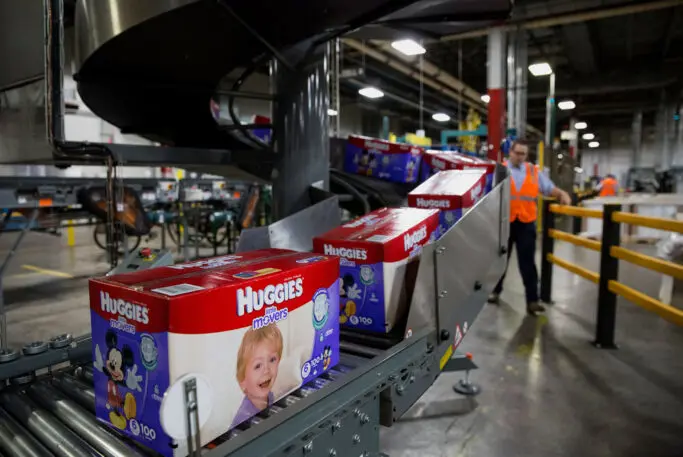
Keighley retired in 2015, but four years ago, he came across a project that piqued his interest. A former employee, MIT-trained engineer Amrita Saigal, was launching an eco-friendly diaper brand, Kudos, and needed his expertise. He signed up immediately.
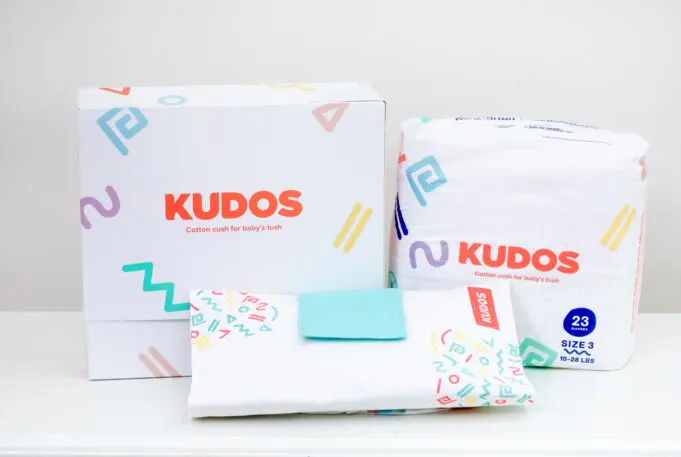
The Sustainable Diaper Boom
Kudos launched last year as a direct-to-consumer brand, and was marketed online to environmentally conscious millennial parents. On the surface, a Kudos diaper looks identical to Pampers or Huggies, but while a traditional diaper’s liner is made from polyester and polypropylene, Kudos’ is made from 100% cotton. Underneath this top layer, Saigal’s team has patented an absorbency layer made from plant-based materials, including wood pulp. However, there’s still plastic at the core of the diaper, since it uses super absorbent polymers, which are currently used in almost every diaper on the market. “Our goal is to move to 100% biodegradable materials, but right now there isn’t anything that works as well as these polymers,” she says. “We need to balance sustainability with effectiveness.”
It took two years to develop and manufacture this cotton diaper. While Pampers and Huggies have their own manufacturing facilities that can crank out thousands of diapers an hour, Saigal says it costs about $4 million to buy a diaper machine that can make just a single size. (Kudos makes six sizes.) Instead, she had to find an independent factory willing to partner with them, a particular challenge because of the materials they were using. “It takes time and a lot of R&D to get the supply chain up and running,” Keighley says.


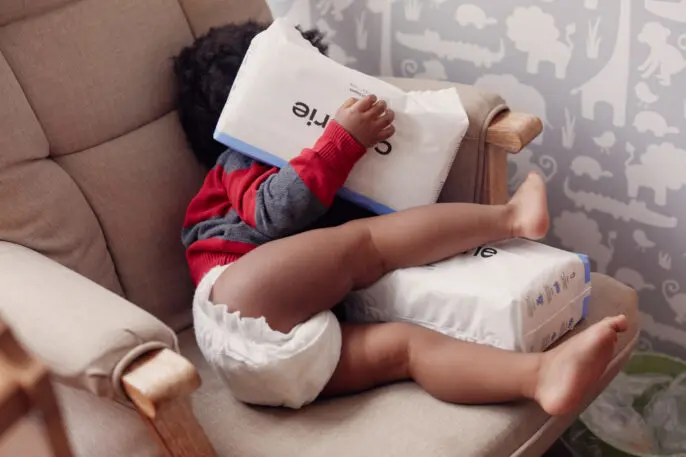
What If We Toilet Trained Babies Faster?
Coterie, a diaper startup founded in 2018, has a totally different approach to sustainability. Founder Frank Yu was inspired by Japanese brands that sold “high-end” diapers using materials that are softer and more absorbent. Coterie uses more plastic than other similar startups, but Yu says the brand is actively searching for new materials, including a new super absorbent polymer that’s biodegradable. Still, Yu believes there are ways to make diapers even more eco-friendly: Eliminate the need for them entirely.
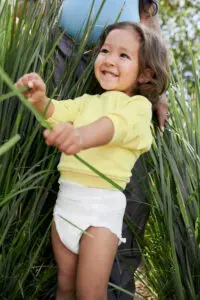
This week, Coterie launched a new product called the Pant, which is designed to help kids toilet train faster. They’re a hybrid between a diaper and a training pant, and fit babies who weigh as little as 16 pounds, which is typically around six months. They’re design to be pulled up like pants, but they have a band that can be unfastened at the top, so parents can change the baby on a changing table.”The idea is to facilitate the transition away from diapers,” Yu says. “The baby has the freedom to learn to use the bathroom when they feel ready. And developmentally, many babies are ready to toilet train much earlier than we typically do in the U.S.”
While it’s in companies’ financial interest to keep babies in diapers as long as possible, Yu believes it’s worth helping parents facilitate toilet training.”We think it will offer customers a far better experience with the brand,” he says.
The Future of the Diaper
Keighley believes that Pampers and Huggies are paying attention to these startups. They’ve started to launch their own lines that are a little more sustainable, including Pampers Pure, which contains a plant-based liner, and Huggies Pure and Natural, which uses organic cotton on the outer layer. Underneath, both brands continue to use polypropylene and polyester. But it’s a sign that they’re starting to respond to consumers’ desire for more eco-friendly options.
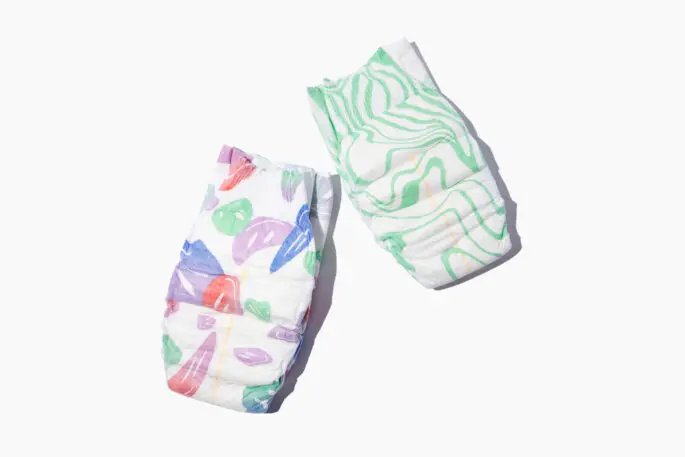
Still, he believes the industry is ripe for change and will ultimately move toward biodegradable materials. But rather than making these changes internally, these conglomerates might be more apt to simply acquire one of the smaller competitors that has put work into designing and manufacturing an effective and sustainable diaper. “There’s no question that the future of the industry is biodegradable and compostable diapers,” he says. “It’s just a matter of how quickly we’ll get there.”
Recognize your brand’s excellence by applying to this year’s Brands That Matter Awards before the early-rate deadline, May 3.
